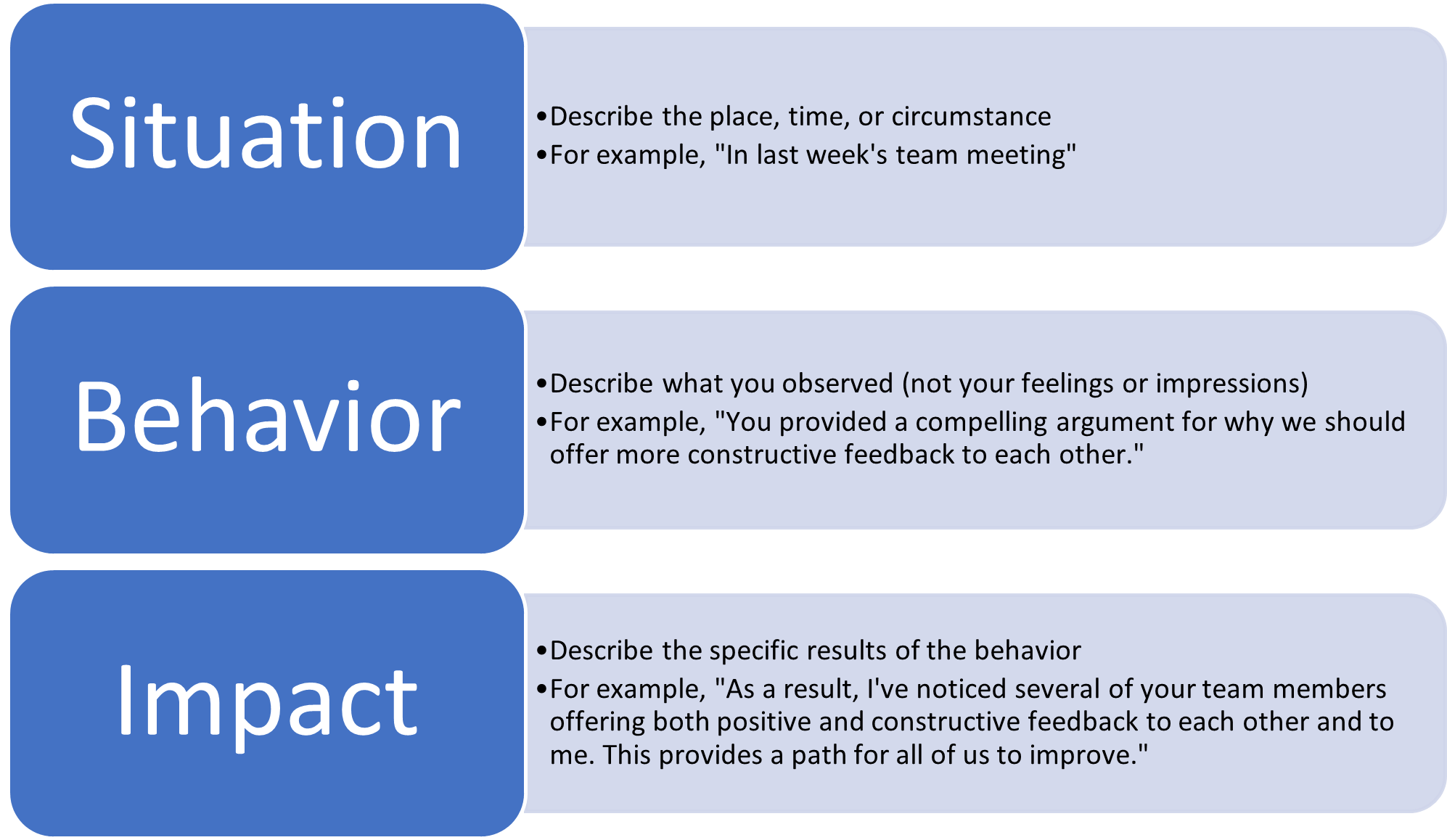Feedback

Feedback is essential to learning and growth. If we don’t receive feedback, we can’t know what we’re doing well, so we can do more of it. Without feedback, we never know if we’ve said or done something incorrect or harmful. A lack of feedback leaves us feeling stuck. The problem is, many of us don’t know how to give or receive feedback in a constructive way.
Providing Feedback
One of the most important things about providing feedback is that effective feedback is all about helping the receiver of the feedback improve. The SBI model of feedback from the Center for Creative Leadership is one way to structure a feedback message that provides the necessary information for improvement.
Helpful Resources
Videos
Articles
-
Center for Creative Leadership: "Closing the Gap Between Intent and Impact"
-
Dr. Brené Brown: "The Engaged Feedback Checklist" [PDF]
Reducing Bias
Despite our best efforts, our biases often still creep into our feedback messages and performance reviews. We all have our biases —it’s when we fail to recognize, check, and mitigate them that they can cause harm. Here are some resources for recognizing how and where bias exists, and tools to mitigate bias.
- "The one word that shows performance reviews are still terribly biased": This article from Fast Company shares data from Textio research into biased language use in performance reviews.
- "Types of performance review biases & how to avoid them": This article from Culture Amp provides descriptions of several common biases, along with videos that provide examples of those biases in action, and how we can check those biases, especially when providing feedback.
- "Disrupt Bias in Performance Management": This video from Forshay offers some ways to disrupt bias in performance conversations.
Contact Us
3201 Arch St
Philadelphia, PA 19104
In-Person Hours
Monday-Thursday: 8 a.m. - 5 p.m.
Remote Hours
Monday-Friday: 8 a.m. - 5 p.m.